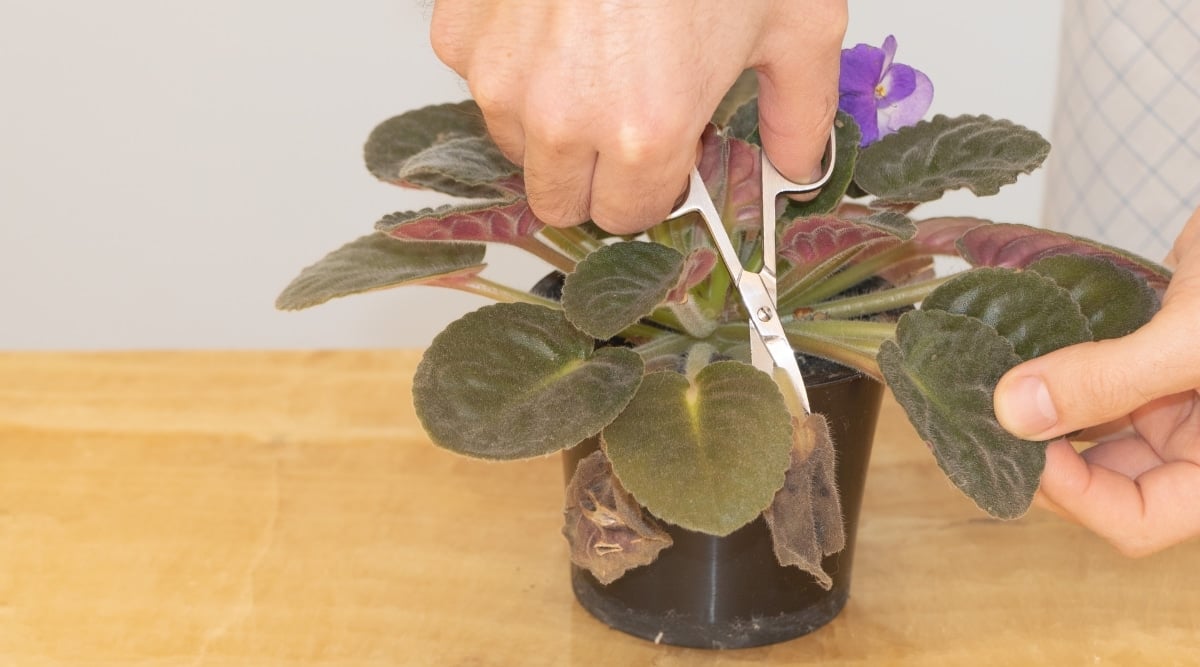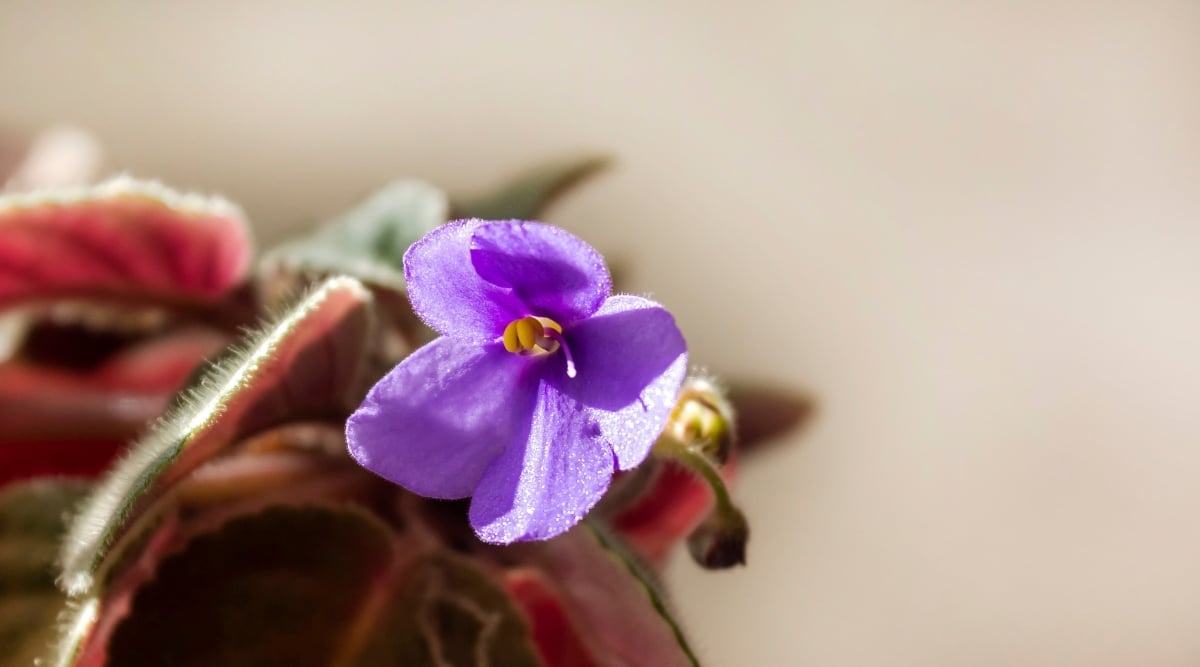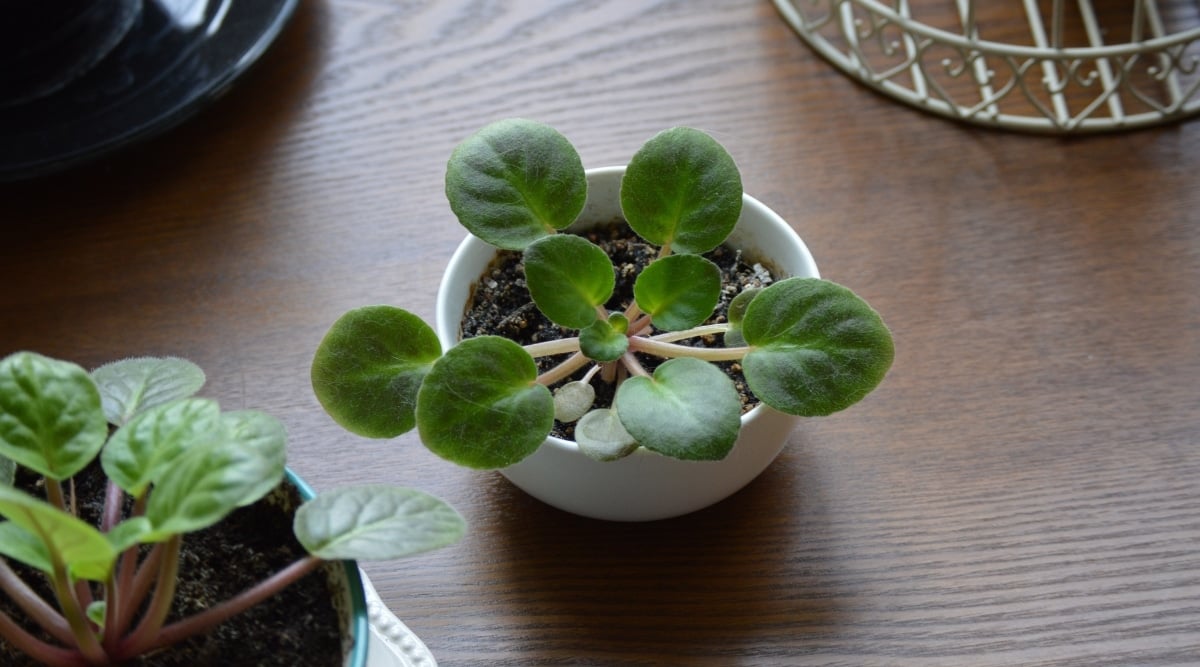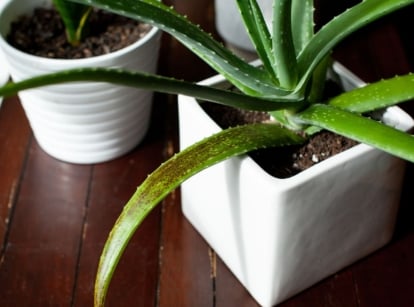7 Signs Your African Violets Aren’t Getting Enough Water
Are you worried that your African Violets may not be getting enough water? These popular houseplants can be picky about their moisture needs. In this article, gardening expert Liessa Bowen looks through the most common symptoms that your African Violets may show when they are lacking in moisture.

Contents
African Violets are one of the most popular and widely available houseplants. You can find them at garden centers, nurseries, greenhouses, hardware stores, and grocery stores. They’ve also become a popular plant to purchase online from specialty growers. Even though they are very popular, African violets have a reputation for being a little fussy to grow.
If grown in ideal conditions, African violets are known to bloom almost continually. But what if you notice your violets don’t look quite right? There are quite a few reasons they may look sick or unhealthy. If you know what signs to look for, you can usually diagnose the problem fairly quickly. And once you identify a likely problem, you can take the appropriate steps to correct the issue.
In this article, we will look at the most common signs African Violets will display when they aren’t getting enough water. In some cases, you will notice multiple symptoms at once. Also note that a single symptom may not have just one cause, so be aware of any combination of symptoms you observe. If you do some basic detective work and make several observations, you should be able to tell if your violets need more water or if you have another issue.
Dry Soil

One of the first and easiest things to do, even before your plant shows signs of distress, is to check the moisture level of the soil. Simply touch the soil surface with your fingertip. Is the soil completely dry? Has the soil been dry for several days?
You can also pick up the pot to determine if it is very light (indicating dry soil), or does it feel heavier than usual (indicating wet soil). Dry soil is the first indication that it’s time to water your plant.
But before start watering your African Violet, consider when you last watered it. These plants are very easy to overwater. The soil actually should be allowed to dry out briefly between waterings. They need loose, well-drained soil to stay healthy.
The roots need access to air and will quickly rot and die if allowed to sit in constantly wet and waterlogged soil. If the soil is still wet or moist, let it dry before watering again.
Wilting Flowers & Foliage

If your African violet is wilting, it is definitely trying to tell you something. One reason they will wilt is because they are too dry and need to be watered. If you’ve seen your plant wilting, and the soil has been dry for several days, it is very likely your plant is in need of a drink.
But there are several other reasons your plant could be wilting:
Too Dry: If your plant hasn’t been watered in a while and has been completely dry for several days, it will eventually start to wilt. If this is the case, it’s time to water it.
Too Wet: If your plant has been sitting in wet, soggy soil, it will wilt because the roots are starting to rot. If caught very early, you may be able to save your violet by carefully removing any rotten parts and repotting it in fresh, dry soil. If left untreated, rotten roots will lead to crown rot, and the entire plant turns mushy and dies.
Too Cold: A plant that is a little too cold will simply grow slowly and not perform well. If it is much too cold for too long, the plant will go into shock, wilt, and eventually die. Keep them in a warm place, ideally around 70 degrees.
Too Hot: Native to tropical rainforests, these plants don’t like to be overly hot. Anything over 80 degrees is probably too hot, and if it’s over 85 degrees for too long, your plant’s first sign of distress will probably be wilting. Try to keep your plants closer to 70 degrees for optimum performance, and keep the temperature under 80 degrees.
Pests: If your plant is infested with insect pests, you will probably notice it wilting, but you will also see insects feeding on your plant. Aphids, mites, and mealybugs are the most likely culprits. If you have buggy violets, treat them for the specific insect pest, and once your plants are free of bugs, they should revive quickly.
Leaves are Dry, Brown, or Shriveled

A healthy African violet has juicy green leaves that look and feel fresh and firm. If their leaves are starting to turn brown and dry, you definitely have a problem. If your plant has not been watered in a long time, it will dry out due to a simple lack of moisture. As a result, leaves will turn brown, shrivel, and die.
If your plant is dry and brown as a result of underwatering, it has been severely underwatered. In the future, you will want to water your plant more often. Allow the soil to dry briefly between waterings, but don’t let the plant get past the wilting-leaf phase. Slightly wilted leaves can recover, but crunchy dry leaves cannot.
Limp Flowers

African violets in need of water will not perform well. A healthy plant will develop firm flower buds and healthy, brightly colored flowers with good shape and form.
If your plant develops flowers that seem to be drooping on their stems, this may be a sign your plant needs water. Typically, if the flowers are limp, the leaves will also be wilting. If this is the case and the soil has been dry for too long, it’s time to give your plant a drink.
Plants Develop Buds but Don’t Flower

If your violets develop flower buds but never flower, this could be a sign that your plants need a bit of extra water. Check the soil moisture. If your plants haven’t been watered in a while, and the soil is dry, give them a drink.
If your plants are stressed because they are chronically underwatered, you could try watering them a bit more often. Still allow the soil to dry, but don’t wait quite so long between waterings.
Extended Periods Without Flowers

It’s natural for African violets to take brief pauses between flowering displays. If your African violets simply don’t flower at all, there could be several reasons to look for.
One reason is lack of water. Again, check the soil moisture level. If the soil has been consistently dry, your plant is not in optimum flowering conditions. If your plants aren’t flowering because they lack water, you will probably notice other symptoms as well, such as frequently wilting leaves.
African violets need regular waterings to grow and develop normally. But there are other reasons, besides lack of water, that they may have flowering issues. Lack of flowering can also indicate your plants are in need of fertilizer, that they need more light, or that they are too cold.
Plant Growth is Slow

Healthy African violets grow slowly but steadily. You will notice new leaves developing and growing from the central crown. You will notice flower stalks growing, budding, and blooming. If your plant seems to have stopped growing entirely or if the growth seems to have slowed dramatically, it’s time to figure out why.
Plant growth may stall when they receive inconsistent watering or consistent underwatering. Do you also notice some wilting leaves or soil that is dry for extended periods? You can try watering your plant more frequently or deeply.
If you water from the top, make sure the water is penetrating the soil to the roots, not just making the soil surface wet. If you water from below (preferred), make sure to give the soil enough time to absorb sufficient moisture.
Some other reasons your African violet may have stopped growing are: lack of regular watering, lack of fertilizer, temperatures too cold, temperatures too hot, or insect infestations.
It should be fairly obvious which issue you have, and once you figure it out, you can correct the problem. It may take your plant a little while, but it will perk up again with a bit of attention and proper care.
Final Thoughts
A basic rule of thumb about watering African violets is to allow them to dry briefly between waterings. The soil surface should feel dry, and there should not be any sign of moisture around the bottom of the pot, either. Once dry, water your plants thoroughly, preferably from the bottom, and allow them to dry out again.
Plants that are underwatered will show symptoms of distress, usually starting with slightly wilting leaves. Plants that are chronically underwatered may show more dramatic signs of distress.
Once you get into a watering pattern with your plants, you will know what to look for and feel confident about caring for your violets. Watering your African violets will be a breeze, and your plants will look healthy and vibrant.









